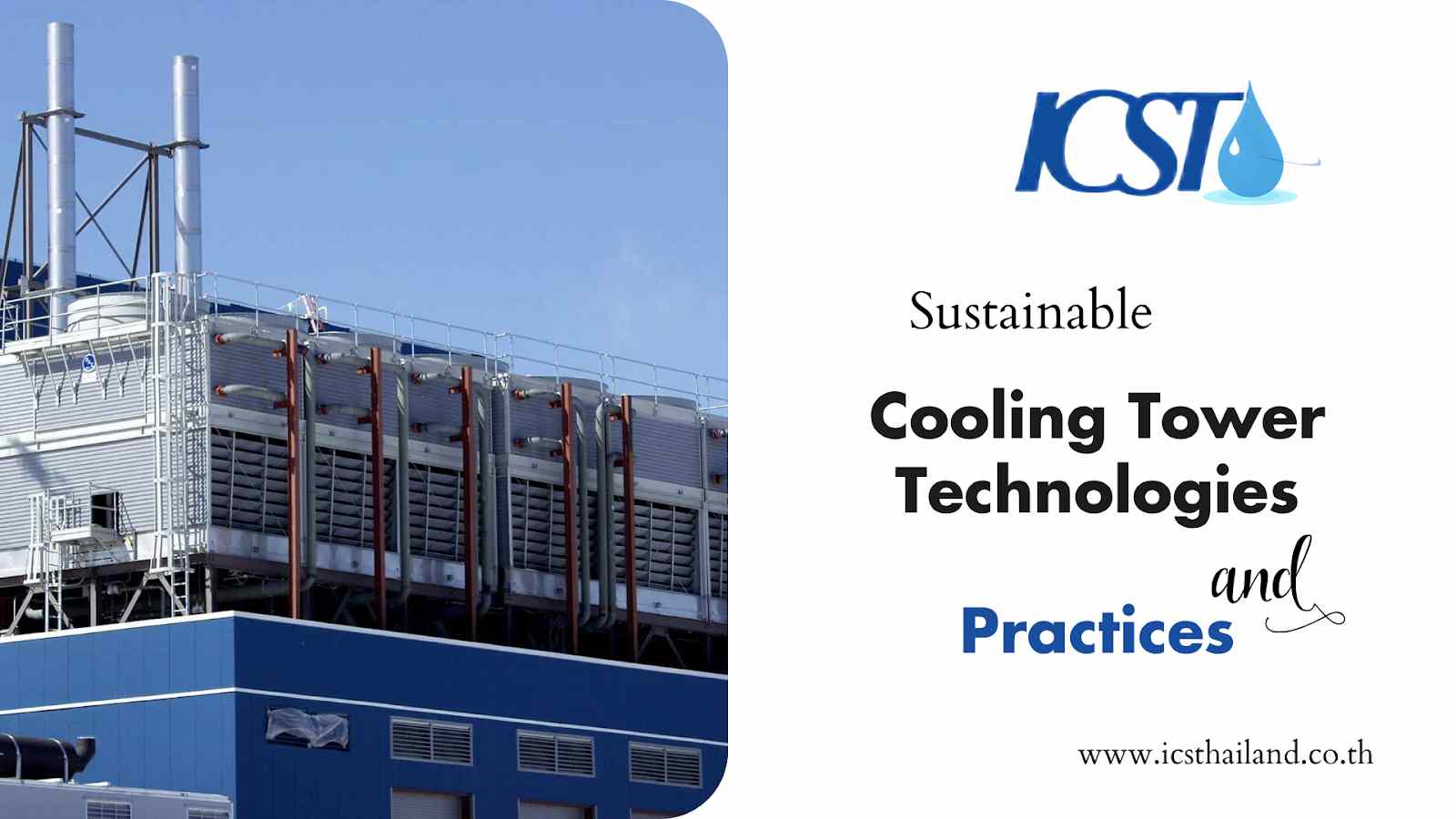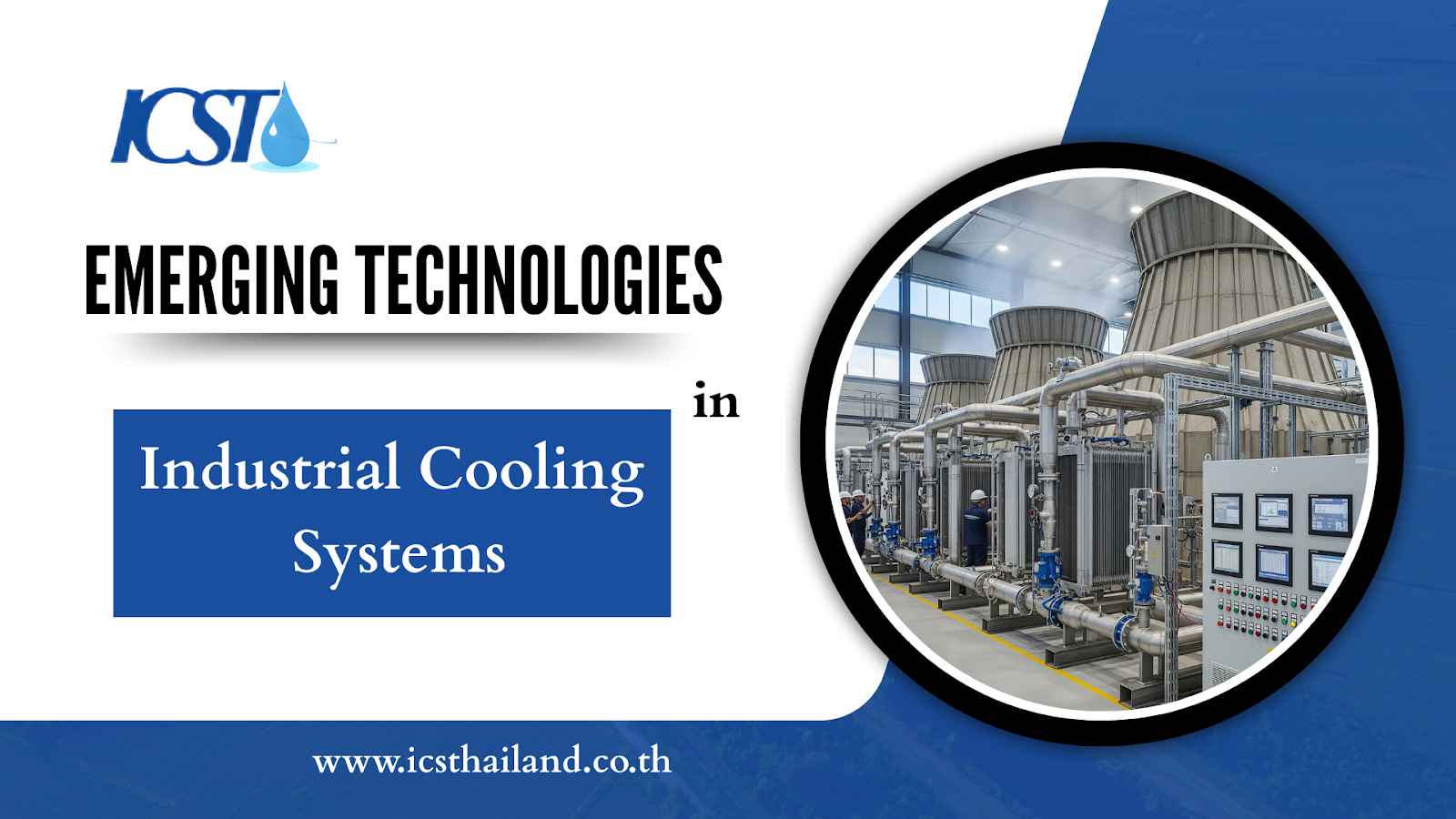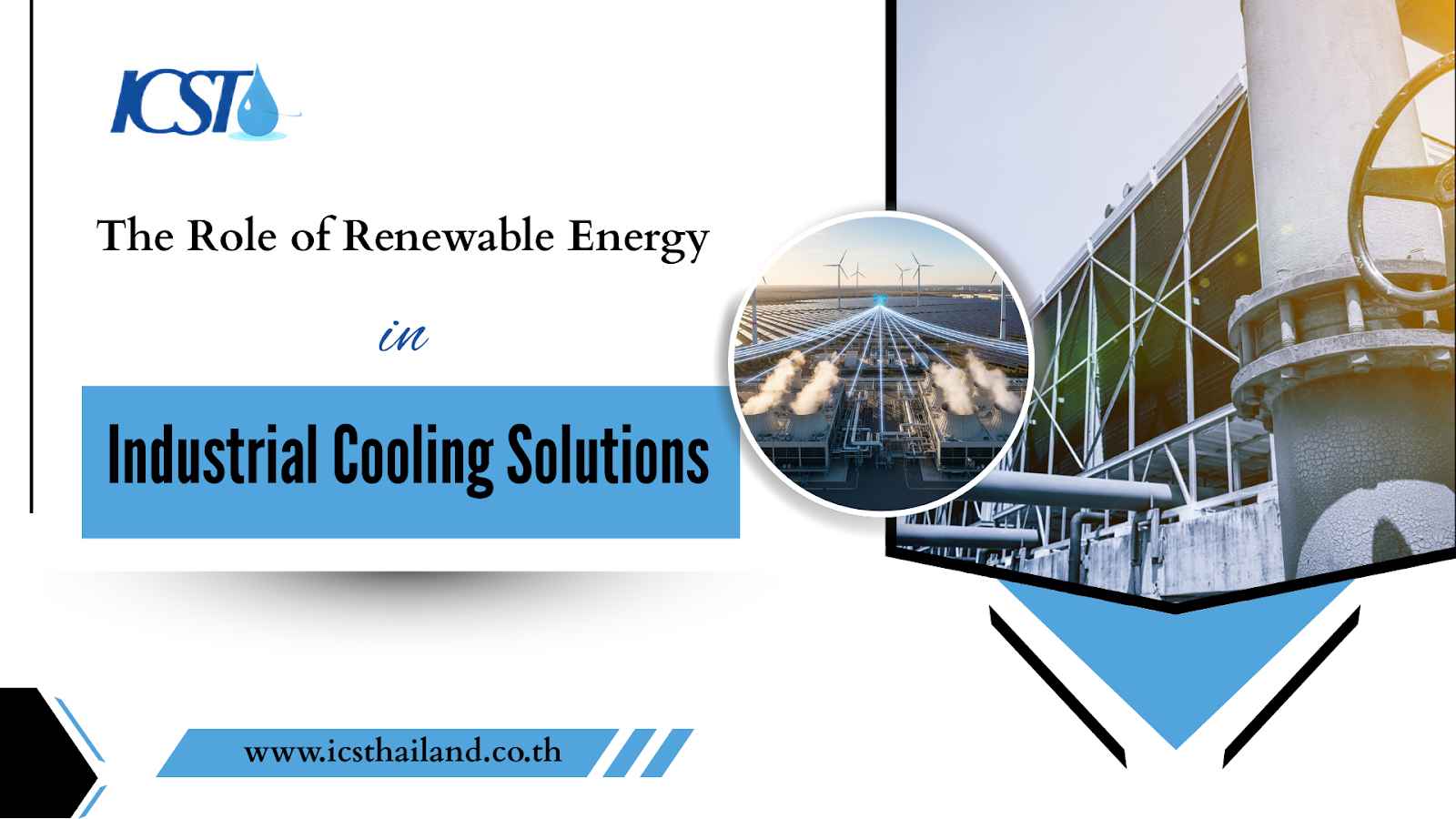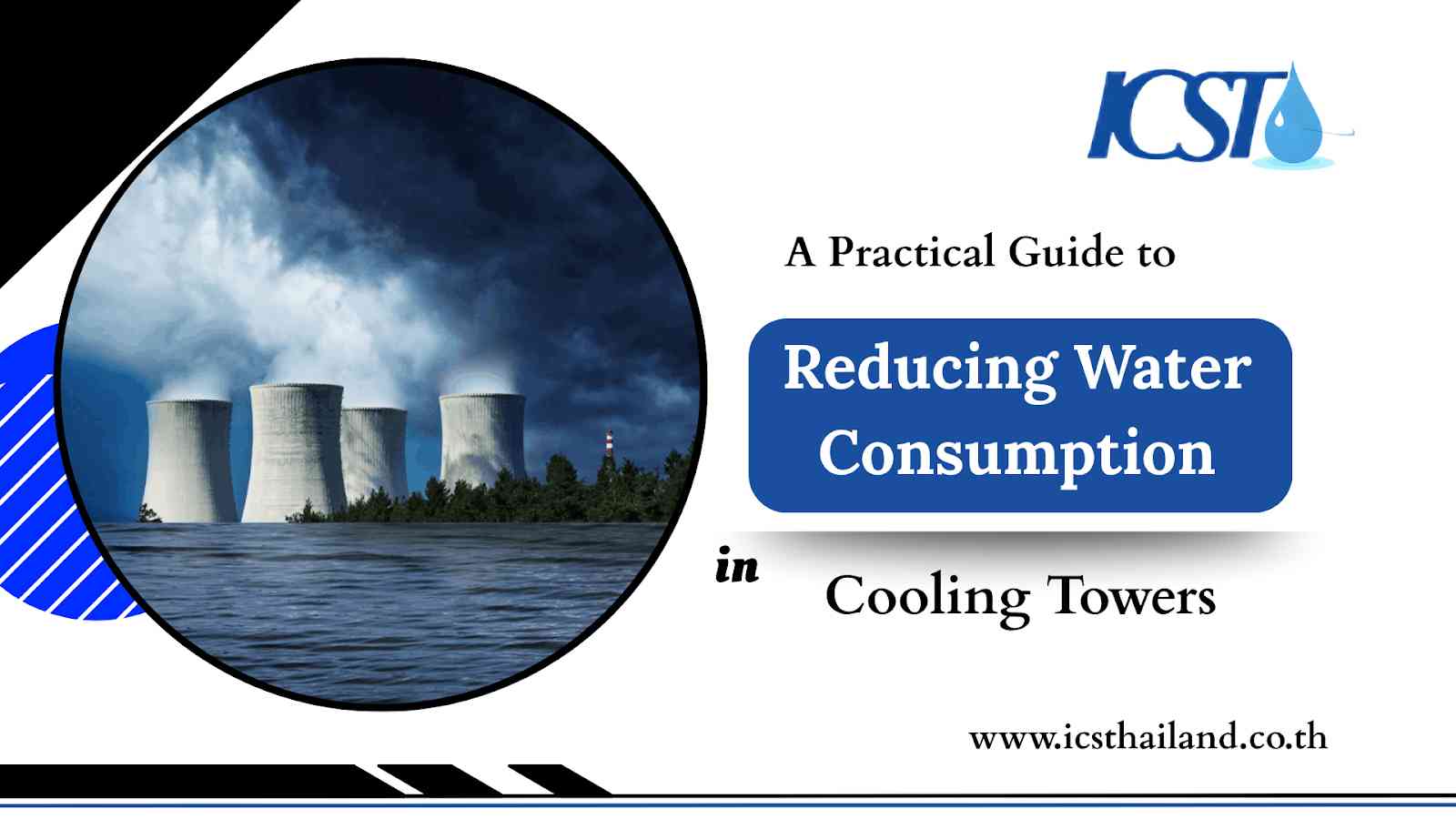Industrial facility managers face an unrelenting challenge. Rising operational costs squeeze budgets while sustainability mandates demand immediate action. Meanwhile, aging cooling systems continue consuming resources at alarming rates, threatening both profitability and environmental compliance.
Traditional cooling towers compound these pressures. Energy consumption remains high due to outdated components and inefficient operation. Chemical treatments create ongoing costs while potentially harming the environment.
In this blog post, I will share a three-pillar strategy to revolutionize cooling tower technologies. I’ll explain how you can reduce water usage by up to 70%, cut energy costs in half, and see measurable results within months.
You’ll discover how to achieve lower costs, greater efficiency, and a more sustainable footprint that positions your facility as an industry leader.
Table of Contents
ToggleThe Core Technologies for Sustainable Cooling
The sustainability of modern cooling towers is built on three key pillars. Each addresses critical inefficiencies while creating measurable financial returns. The key lies in understanding how these technologies work together to maximize performance.
Water Conservation Technologies
Water is the most significant variable expense in operating cooling towers. Smart facilities are dramatically reducing consumption through advanced conservation technologies that maintain performance while cutting expenses.
The Cornerstone: Optimizing Cycles of Concentration
- Cycles of concentration measure how efficiently a cooling tower uses water by tracking how many times water circulates before being discharged as blowdown.
- Most facilities operate at 3-4 cycles, wasting significant amounts of water.
- Advanced systems can achieve 8-12 cycles or more, reducing blowdown by 60-75%.
- Higher cycles lead to lower water bills and a reduced environmental impact.
- Modern water treatment technologies enable higher cycles without issues like scaling or corrosion.
Non-Chemical Solutions
Traditional chemical treatments create ongoing costs and environmental concerns. Modern alternatives deliver superior results while eliminating these drawbacks:
- Magnetic Systems: Use powerful magnetic fields to alter mineral behavior, preventing scale formation without chemicals
- Ionization Technology: Releases copper and silver ions that control bacteria and algae naturally
- UV Sterilization: Eliminates biological growth through targeted ultraviolet exposure
These technologies work individually or in combination, often eliminating 80% or more of traditional chemical requirements while improving water quality.
Pre-Treatment Methods
Strategic pre-treatment transforms poor-quality water into an asset. Two primary approaches address different water quality challenges:
- Water Softening removes hardness minerals that cause scaling. This cost-effective solution works well for moderately hard water sources and enables higher cycles of concentration.
- Reverse Osmosis (RO) produces ultra-pure water suitable for the most demanding applications. While initial costs are higher, RO enables exceptionally high cycles and virtually eliminates scaling risks.
The choice depends on your water source quality, operational requirements, and economic factors.
Beyond Blowdown: Alternative Water Sources
Progressive facilities are reducing reliance on expensive potable water through alternative sources.
| Alternative Source | Best Suited For | Pros | Cons |
| Gray Water | Facilities with existing on-site wastewater | Reduces municipal demand, potential for cost savings | High mineral content requires pH control |
| RO Permeate | High-tech industries with strict water quality needs | Enables exceptionally high cycles, minimal scaling risk | High initial cost, water can be highly corrosive |
| Municipal Wastewater | Areas with supportive local regulations | Eliminates conventional water usage, often good quality | Requires collaboration with municipalities, with potential for varying quality |
Energy Optimization Technologies
Energy costs represent the second-largest expense in cooling tower operations. Modern technologies dramatically reduce consumption while improving reliability and performance.
The Power of VFDs
VFDs match motor speed precisely to cooling requirements. When demand is lower, fans and pumps run at slower speeds, using much less energy. Energy savings of 30-50% are common, with some facilities achieving even greater reductions.
The technology pays for itself quickly through reduced electricity bills while extending equipment life through gentler operation.
High-Efficiency Components
- Advanced Fill Media: Engineered surfaces maximize heat transfer efficiency, requiring less fan power to achieve target temperatures
- Precision Nozzles: Optimized water distribution patterns improve cooling effectiveness while reducing pump energy
- Low-Drift Eliminators: Innovative designs collect more water droplets, lowering the need for additional makeup water
These components work synergistically to enhance overall system efficiency beyond what individual improvements might suggest.
Automated Cleaning Systems
- Scale and biofouling act as insulators, making cooling systems work harder and use more energy.
- Automated cleaning systems prevent buildup with continuous, gentle cleaning.
- On-load cleaning systems operate while the cooling tower is running, removing deposits early.
- Proactive cleaning maintains peak efficiency and avoids costly, disruptive manual cleaning shutdowns.
Smart Operations & Data-Driven Technologies
The third pillar leverages advanced monitoring and analytics to optimize performance continuously. These technologies transform reactive maintenance into proactive management.
Real-Time Monitoring
IoT sensors continuously collect critical performance data, including water quality parameters, flow rates, temperatures, and equipment status. This real-time visibility enables immediate response to changing conditions.
Operators can monitor chemical levels, energy usage, and cycles of concentration remotely. Automated alerts notify staff of conditions requiring attention before they become problems.
Predictive Maintenance
- Advanced analytics convert sensor data into actionable insights.
- Predictive maintenance minimizes costly emergency repairs and extends equipment lifespan.
- Maintenance is scheduled based on actual equipment condition, not arbitrary time intervals, reducing costs and downtime.
Essential Practices for Sustainable Cooling Tower Operation
Technology alone cannot deliver optimal results. Sustainable operations require strategic practices that maximize technology benefits while ensuring long-term reliability.
The ROI of Sustainable Cooling:
Financial justification drives most sustainability investments. Having a clear view of costs and benefits supports confident decisions and helps gain necessary approvals.
Sustainable cooling technologies typically generate savings across multiple categories. Energy optimization cuts electricity costs significantly. Reduced chemical usage eliminates ongoing treatment expenses.
Consider this representative analysis for a mid-sized facility:
| Category | Example Annual Savings |
| Reduced Water Consumption | $5,000 |
| Reduced Energy Usage | $10,000 |
| Reduced Chemical Costs | $3,000 |
| Total Annual Savings | $18,000 |
| Initial Investment | $54,000 |
| Estimated Payback Period | 3 years |
This conservative example demonstrates how sustainable technologies pay for themselves through operational savings. Many facilities achieve faster payback periods, particularly those with high utility costs or intensive cooling requirements.
Real-World Applications & Industry-Specific Considerations
Different industries face unique cooling challenges that influence technology selection and implementation strategies. Understanding these nuances ensures optimal results.
Manufacturing
- Process cooling reliability and energy optimization are top priorities for manufacturing facilities.
- Cooling system failures can’t disrupt production, making predictive maintenance essential.
- Water conservation technologies help lower utility costs and comply with stricter discharge regulations.
- Energy optimization using VFDs and high-efficiency components reduces production costs.
Commercial Buildings
- Commercial buildings prioritize water conservation and low-maintenance HVAC solutions.
- Facility managers seek technologies that lower operating costs and maintenance needs.
- Non-chemical water treatment removes storage and handling risks, reducing liability.
- Automated systems save staff time, enabling focus on other facility priorities.
Power Plants
- Power generation facilities need maximum uptime and efficient heat rejection to operate effectively.
- Even small efficiency losses can lead to major revenue impacts due to the scale of operations.
- Advanced monitoring and predictive maintenance help prevent costly forced outages.
- High-efficiency components and optimized water treatment ensure peak performance under demanding conditions.
Addressing Common Challenges
Implementation success depends on addressing common concerns and obstacles that facilities encounter. Understanding these challenges enables proactive solutions.
What is the difference between chemical and non-chemical water treatment?
Chemical treatments rely on acids, biocides, and scale inhibitors to control water quality. While effective, they create ongoing costs, safety concerns, and environmental impacts.
Non-chemical systems use physical processes like magnetism, ionization, or UV light to achieve similar results. They eliminate chemical costs and safety risks while often delivering superior performance.
The choice depends on water quality, regulatory requirements, and operational preferences. Many facilities find that non-chemical systems provide better long-term value despite higher initial costs.
Is it better to retrofit an old tower or install a new, sustainable one?
The decision depends on current equipment condition, available space, and performance requirements. Retrofits often provide excellent returns when existing structures are sound.
New installations offer maximum efficiency and latest technology integration. They make sense when current equipment has reached end-of-life or capacity requirements have changed significantly.
What are the most common challenges in implementing sustainable cooling?
Budget approval represents the primary obstacle for most facilities. Developing comprehensive business cases with clear payback calculations addresses financial concerns.
Technical integration challenges arise when retrofitting existing systems. Working with experienced providers ensures compatibility and optimal performance.
Staff training requirements increase with system complexity. Plan for adequate training time and ongoing support to maximize technology benefits.
Conclusion
Sustainable cooling tower technologies deliver measurable results across financial, operational, and environmental metrics. Water conservation, energy optimization, and smart operations work together to create compelling value propositions that justify investment while supporting long-term success.
The path forward requires strategic thinking that goes beyond simple equipment upgrades. Successful implementations combine proven technologies with best practices tailored to specific facility requirements and operational goals.
ICS Thailand partners with forward-thinking facilities to develop customized sustainability strategies that deliver tangible results. Our data-driven approach ensures technology selections align with your unique requirements while maximizing return on investment.
Contact us today for a comprehensive sustainability audit and discover how modern cooling strategies can transform your operations while strengthening your bottom line.
Frequently Asked Questions
What are cycles of concentration?
They measure how efficiently a cooling tower uses water. Higher cycles mean less fresh water is needed, which significantly reduces water consumption and costs.
How do non-chemical water treatments work?
They use physical processes like magnetism or UV light to control scale and bacteria. This eliminates the need for chemicals, reducing costs and environmental risks.
How much energy can be saved with sustainable cooling?
Facilities can save 20-50% on energy. This is achieved by using Variable Frequency Drives (VFDs) and high-efficiency components that match power use to cooling demand.
Do sustainable cooling solutions improve ROI?
Yes. They reduce operational costs for water, energy, and chemicals, leading to a strong return on investment. These savings often pay for the initial upgrade within a few years.








